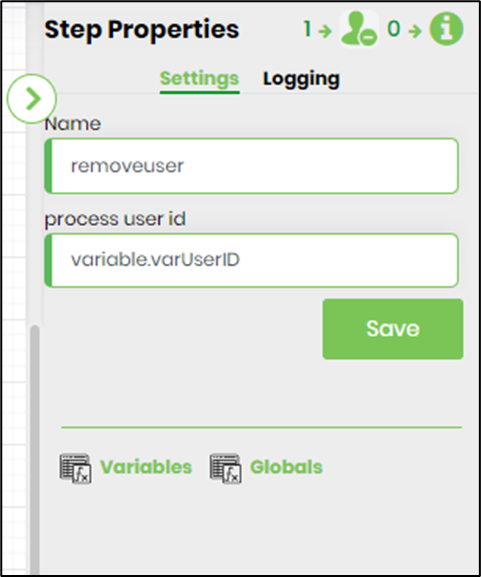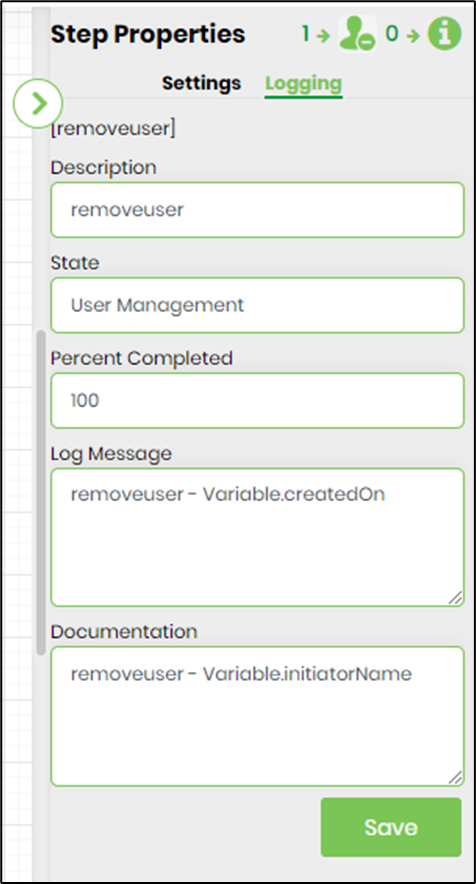removeUser Step
Description:
The step removes a selected user from the FlowWright Users Group.
Inputs
- workflowUserID – user id of the user
Returns
- True – step executed successfully
- False – step failed to execute
Usage:

Example:
Let’s build and execute the “removeUserDef” example.
- Create a new definition called “removeUserDef”
- Select the definition and click the “design” button
- Drag the above steps from the the toolbox to the canvas
- Connect the dots between the Start steps and other steps as above
- Define the variable/global to hold the user-id
- Click on the “getWorkflowUserID” step to configure its “Settings” properties. Provide a name for the step. Provide the user name to fetch. Provide the variable/global to hold the user ID after execution.

- Click on the “removeUser” step to configure its “Settings” properties. Provide a name for the step. Provide the variable/global which holds the user ID from the previous steps.

- The “Logging” setting configuration is necessary for documentation and also measures the workflow progress and the percent complete. This is achieved by configuring the step state and percent fields individually, as shown in the images below. Configure the “Logging” using the following properties.

- Save the process definition, create a new process instance, and execute. Render the process instance. Click on the process step to view its properties. The step shows the user name removed from the FlowWright users group. Navigate to the Users menu—Users to confirm that this user has been removed.
Before:

After:

Definition Sample:
You may download the sample definition(s) from the link here and later import it (drag-drop) to your FlowWright Process Definition (XML file) or Form Definition (HTML file) page.
NOTE: Please verify and complete the process steps for any missing configurations, such as file path references and database connections after import. Then, save the definition to confirm the changes.